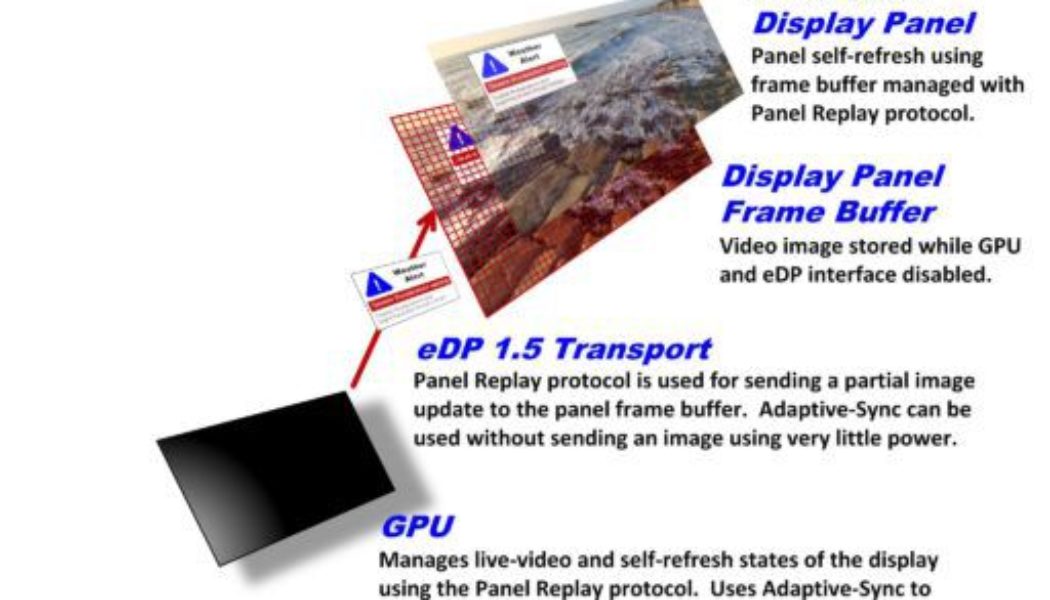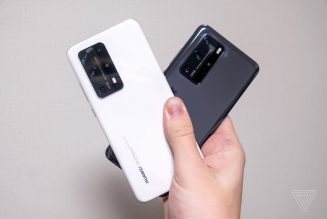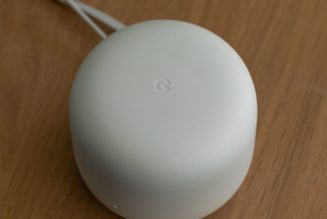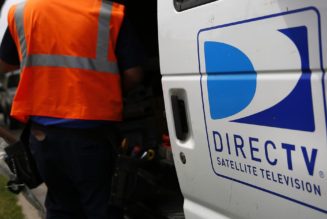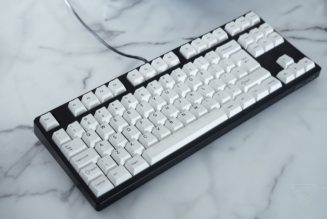Don’t you love standards? I do, for the most part, particularly when they’re fixing things, and the new VESA Embedded DisplayPort 1.5 (or eDP 1.5 for short) looks likely to do that in future fancy-screened laptops. It’s promising more power savings with adaptive-sync screens, OLED panels, and displays that come with their own embedded memory for the battery saving Panel Self-Refresh (PSR) feature.
eDP is the standard for cables and ribbons that connect your high-res screen to the rest of your laptop or tablet, and technically it’s supported all those things before — but they haven’t necessarily played nicely together. For example, I had to turn off PSR when I reviewed the OLED-equipped Dell XPS 15 in 2019 because the screen was constantly flickering, even though manufacturers have had a decade to figure out the technology.
:no_upscale()/cdn.vox-cdn.com/uploads/chorus_asset/file/22967236/VESA_eDP_1.5_Panel_Replay_scaled_e1635348221890.jpg)
You probably shouldn’t expect much additional battery life here: in each of these cases (adaptive sync, OLED and PSR), VESA’s generally talking about additional runtime when your screen isn’t working very hard — perhaps not even moving at all.
Adaptive sync can tell your GPU to spit out fewer frames to match a slower refresh rate of your screen, saving power. Panel Self-Refresh can tell your GPU to produce no additional frames at all since the memory in your display could just store the current screen image in its frame buffer. And with an OLED screen, which has some natural persistence (it’s why blacks can sometimes smear), you may be able to forgo some frames as well. In each case, your GPU gets to power down.
Now, VESA says eDP 1.5 adds Panel Replay, a feature also coming to the delayed DisplayPort 2.0 for external monitors and desktop GPUs — it allows your computer to update part of your screen while leaving the rest untouched, and it works with adaptive sync. eDP 1.5 also formally supports lower refresh rates for OLED screens without the frame buffer, allows adaptive sync to fine-tune the framerate to avoid skipping or repeating frames during video playback, and specifically addresses flicker. There’s also a new “ability to disable the display interface during normal operation (when not using panel self-refresh) during the vertical blanking period, which provides added power savings.”
Overall, “eDP 1.5 achieves power saving by enabling the GPU to briefly power down between frames, which combined with the capability to adjust the frame rate based on workload, allows for additional power saving opportunities,” writes VESA’s chairman. “ We look forward to the increased battery life this will enable across a broad spectrum of laptop PCs.”
